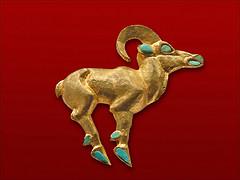
photo : Jean-Pierre Dalbera
One of Europe’s rarest birds, the Lilford woodpecker lives in abundance in Austria. But in which wood would would you find the white-backed woodpecker?
White-Backed Woodpecker
The Lilford woodpecker – or white-backed woodpecker, as it’s also known – lived in abundance in Europe until the Middle Ages. It’s a bird that favours large mature woodlands with plenty of deadwood in which to lay its eggs during the breeding season. Deforestation following the development of urban communities decreased the areas available in which these colourful creatures could live – but not in Austria, an alpine holiday area.
White-backed woodpeckers are easily identified by their size and colouring. They’re between 24 and 26 cm long and have a wingspan of around 38 – 40 cm, making them the largest of the spotted woodpecker family. It has white bars across its wings and sports a white lower back. To help with identification, the male has a red crown and his lady wears one in black (no surprises there that the male gets to flaunt his fathers, whilst the lady wears her widows weeds!).
So, in which Austrian wood would you find an abundance of white-backed woodpecker?
Vienna Wood and the Lainzer Tiergarten
On the outskirts of Vienna in the 13th district of this most venerable and attractive city, is Austria’s famed Vienna Wood. Its ancient forests are alive with the sound of the white-backed woodpecker. With magnificent oak and beech trees that date back centuries, there’s plenty of deadwood around to provide cosy homes for the offspring of this wonderful woodland warbler (well, pecker doesn’t rhyme!).
There’s a sizeable area in Vienna Wood that was fenced off in 1561 during the reign of Emperor Ferdinand Ι for his family’s use as a private hunting ground, known as the Lainzer Tiergarten. It remained in the exclusive use of the Habsburg dynasty until after WWΙ. During the reign of Emperor Franz Josef Ι a summer home was built in the wood, for the benefit of his beloved wife, Elisabeth – also known as Sisi.
Following WWΙ the public were allowed access to the wood, subject to paying an entrance fee. Times were hard and the cash strapped authorities needed the revenue to rebuild their bank. But things changed with the end of the Habsburg era and ever since it’s been an ancient attraction with free admission.
Lainzer Tiergarten is a now a wildlife park with a wide range of flora and fauna, many of which are protected species. Within this walled woodland you will find:
- between 800 and 1000 wild boar
- 200 – 250 fallow deer
- 200 mouflon or wild sheep – ah! now I know what they’ve done with all the sheep
- 80 – 100 red deer
- 94 different species of bird, including the white-backed woodpecker - a bountiful bevvy for birders , twitchers and birdwatchers!
- 15 reptile and amphibian species in the many ponds, pools, meadows and ditches
- 39 species of locust
- 13 species of bat – including the Daubenton’s bat and whiskered bat
- primitive breeds of cow related to aurochs
- and bucket loads of beetles to help feed our feathered friends!
- Hirschstemm and Rohrhaus eateries
- Hubertuswarte – an observation tower built in 1927 and located at the highest point in the park, from where you can have a 360° view of breath-taking beauty, including Vienna city
- Wiener Blick – an observation point that is ideal for sight-seers and a perfect place for picnicking parties.

